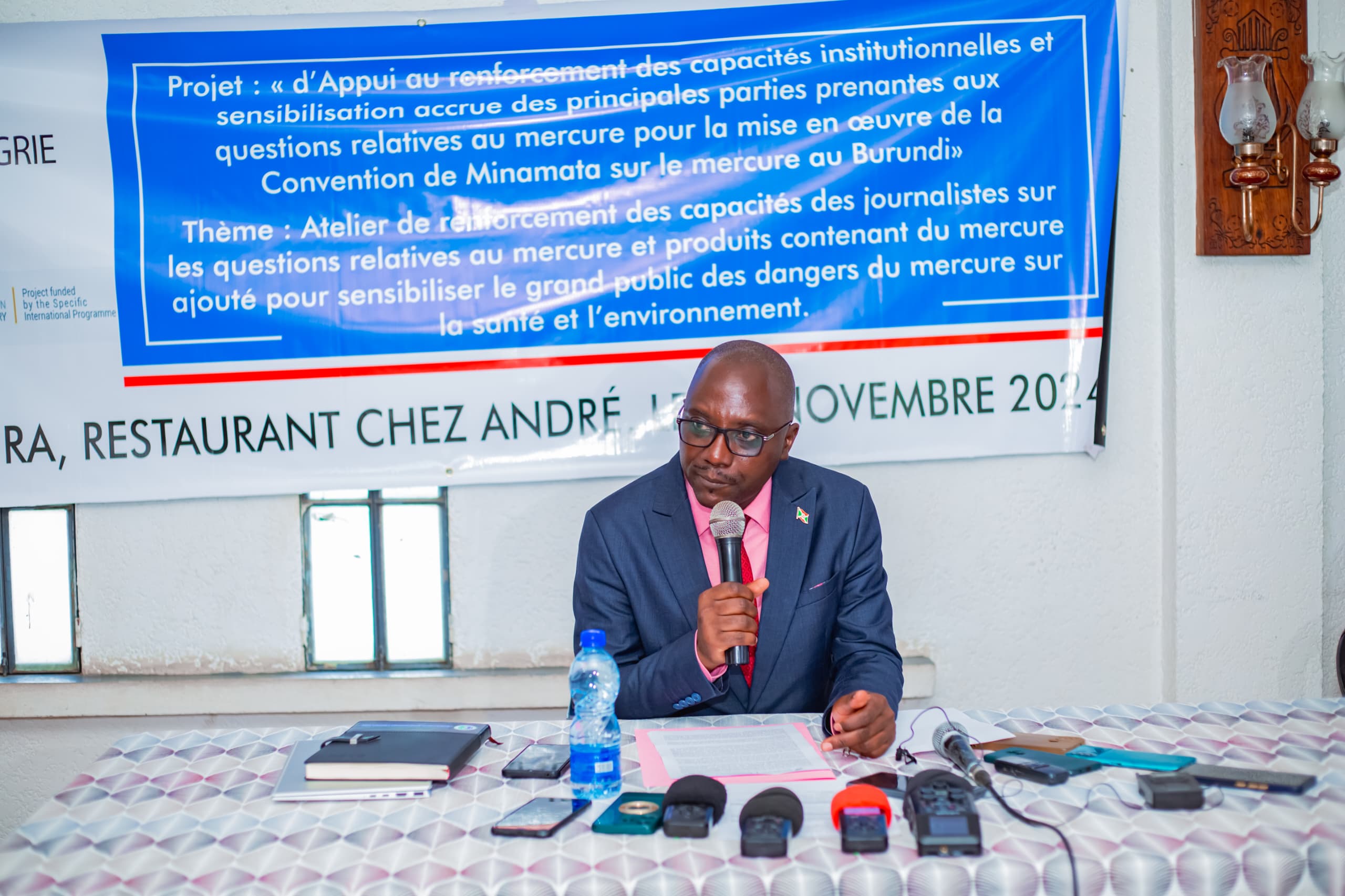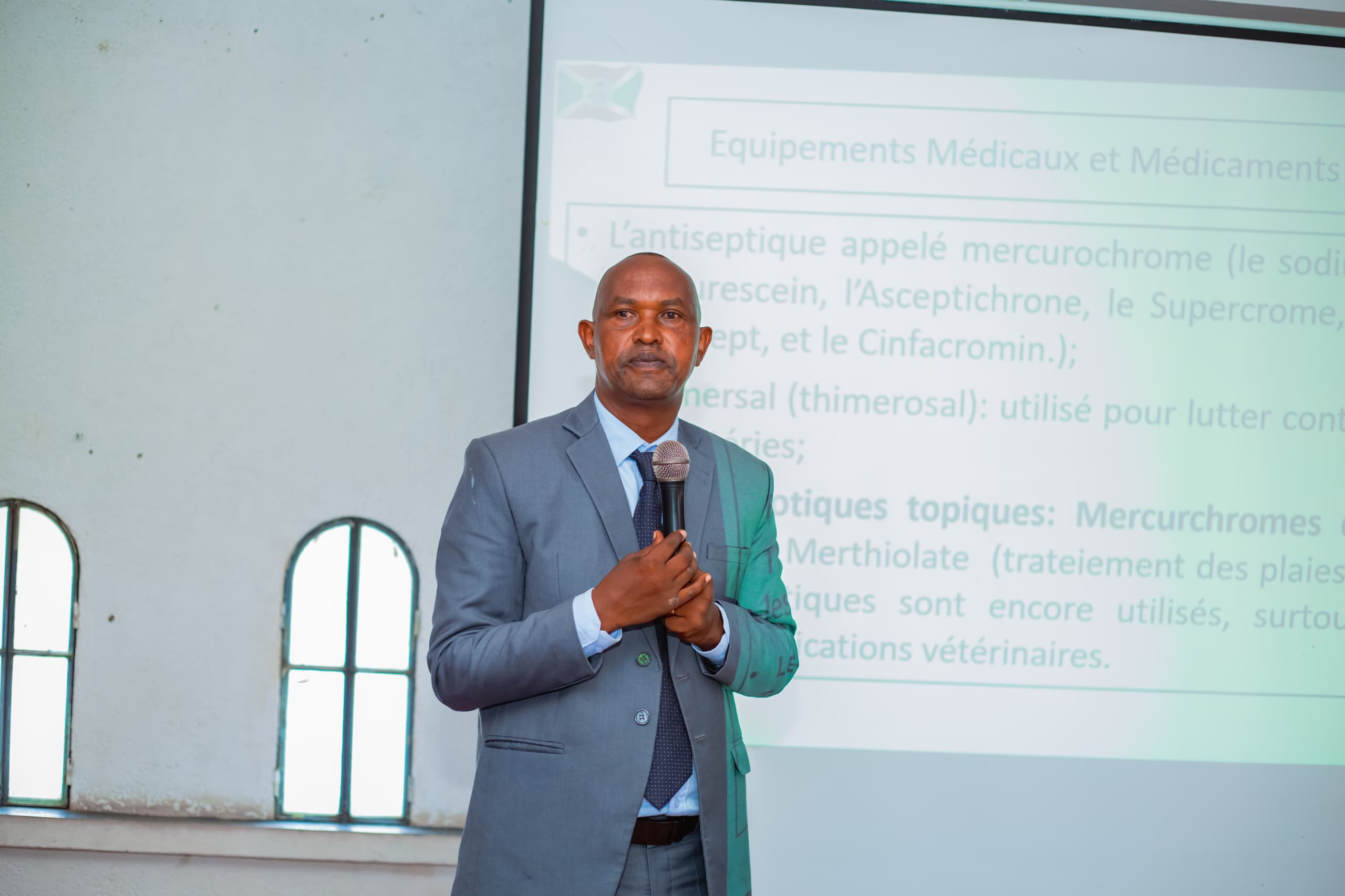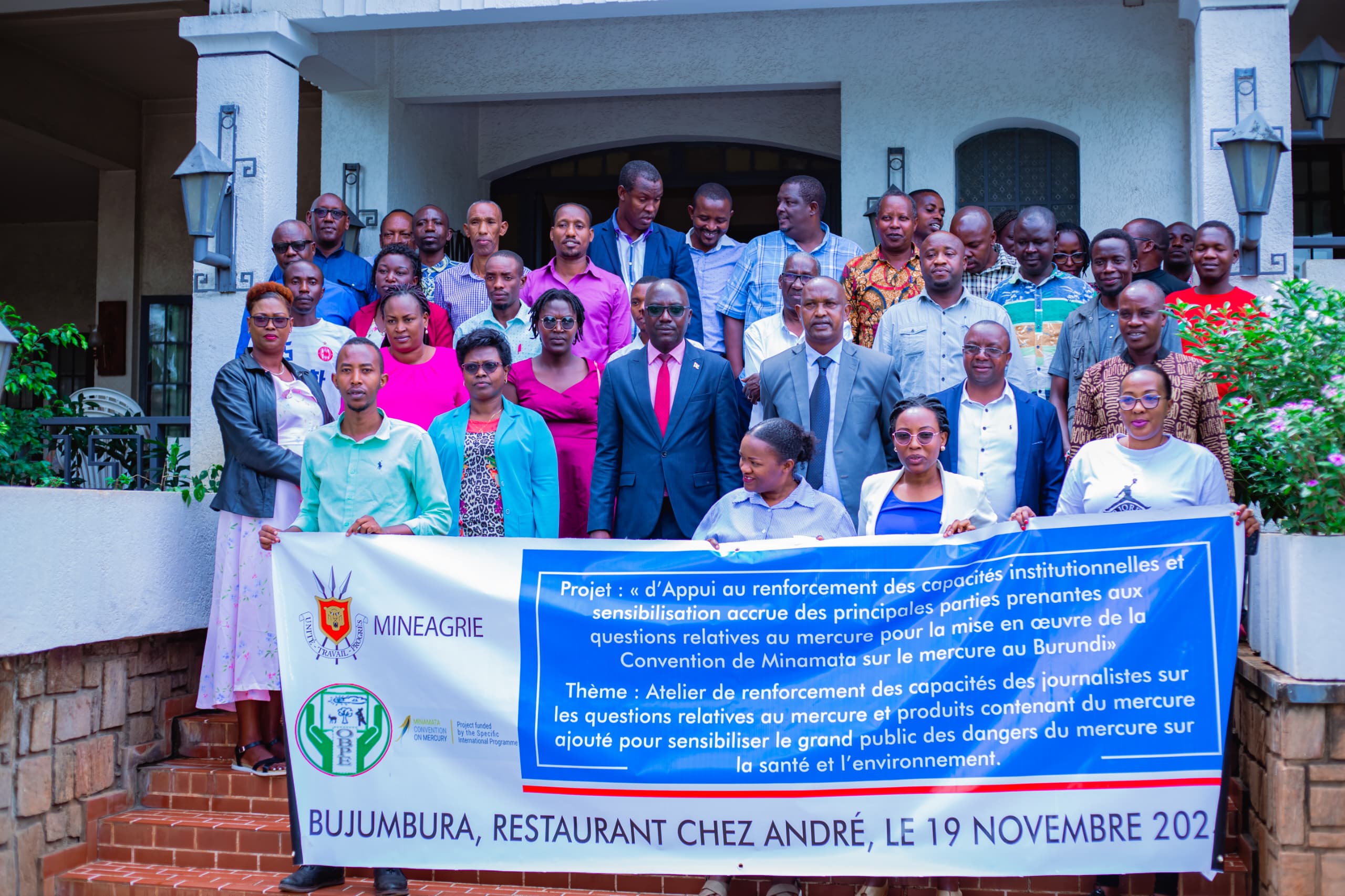BUJUMBURA, November 21st (ABP) – As part of the project to support institutional capacity building and increase awareness among key stakeholders on issues related to mercury, the Ministry of Environment, Agriculture and Livestock, through the Burundi Environmental Protection Authority (OBPE) organized on Tuesday, November 19, 2024, a workshop to build the capacities among journalists on the harmful effects of mercury and products containing added mercury.
The meeting, organized as part of the implementation of the Minamata Convention on Mercury in Burundi, aimed to raise awareness among media professionals on issues related to mercury and to raise awareness among the general public on the dangers of mercury on human and environmental health.
On that occasion, the Director General of OBPE, Berchimans Hatungimana, said that the role of the media in supporting the implementation of the convention, through raising awareness among the general public to prevent dangers, is crucial and essential in order to encourage the adoption of precise, affordable and safe alternatives, without mercury.

He indicated that mercury is a very dangerous metal for human health. Its vapors, when inhaled, can affect the central nervous system. And depending on the levels of exposure, impair cognition and in some cases, cause death.
In his presentation, the coordinator of the mercury project within OBPE, Apollinaire Polisi, said mercury is a chemical product used in socio-economic life. In 2019, studies showed an estimated quantity of 64,363 kg/year. So far, various equipment which may contain mercury, has been available on the market as well as lightening products containing mercury, dangerous for human and environmental health.

It is also observed that dental offices still use dental amalgams called oral application for dental care, waste from equipment containing mercury that ends up in the environment and pollutes the environment and human health.
According to him, in Burundi, studies have shown that dangerous mercury in the form of methyl mercury is present in the environment, particularly in water, soil and the atmosphere.
Gold mining practices are also among the factors of contamination of the environment in which we live. Thus, with the phenomenon of bio-accumulation, we are exposed to mercury, not to mention the poor management of household waste and equipment which constitute one of the ways of environmental pollution by mercury.
Mr. Polisi showed how mercury can harm the health of the fetus when its mother has been exposed to mercury or to the consumption of methyl mercury which causes harmful effects on the brain and nervous system during the development of the child. He added that the onset of neurodevelopmental disorders in children can be observed, including memory, language, attention, fine motor skills and spatial vision disorders.
When mercury escapes into the air, ends up in the lake, in the soil and in vegetation, it has an inhibitory effect on the metabolism of microorganisms, and tends to reduce the self-purification potential of water from a concentration of 18 mg/l. It has the capacity to absorb itself on sediments and suspended matter and has a strong tendency to accumulate in soils, particularly in soils containing humus.
According to him, to have a mercury-free environment, stakeholders must be aware of the rational management of mercury through the management of electrical and electronic waste.
It is also necessary to supervise gold mining cooperatives to apply clean gold extraction technologies, build the capacities of workplace sanitation services on mercury aspects and develop mercury discharge standards. There are also challenges related to the insufficient legal framework, unqualified personnel, lack of working tools, namely equipment, standards setting working conditions, and those determining inspection or audit procedures.
To that end, he said, the training for journalists was first to make them understand the harmful effects of mercury on human and environmental health, by providing them with skills and abilities to develop themes, topics and terminology for raising public awareness on the trade in mercury and products containing mercury.
It was also to be able to guide journalists on the target groups that are sources of information on the one hand and the target groups that are recipients of the information on the other hand.

